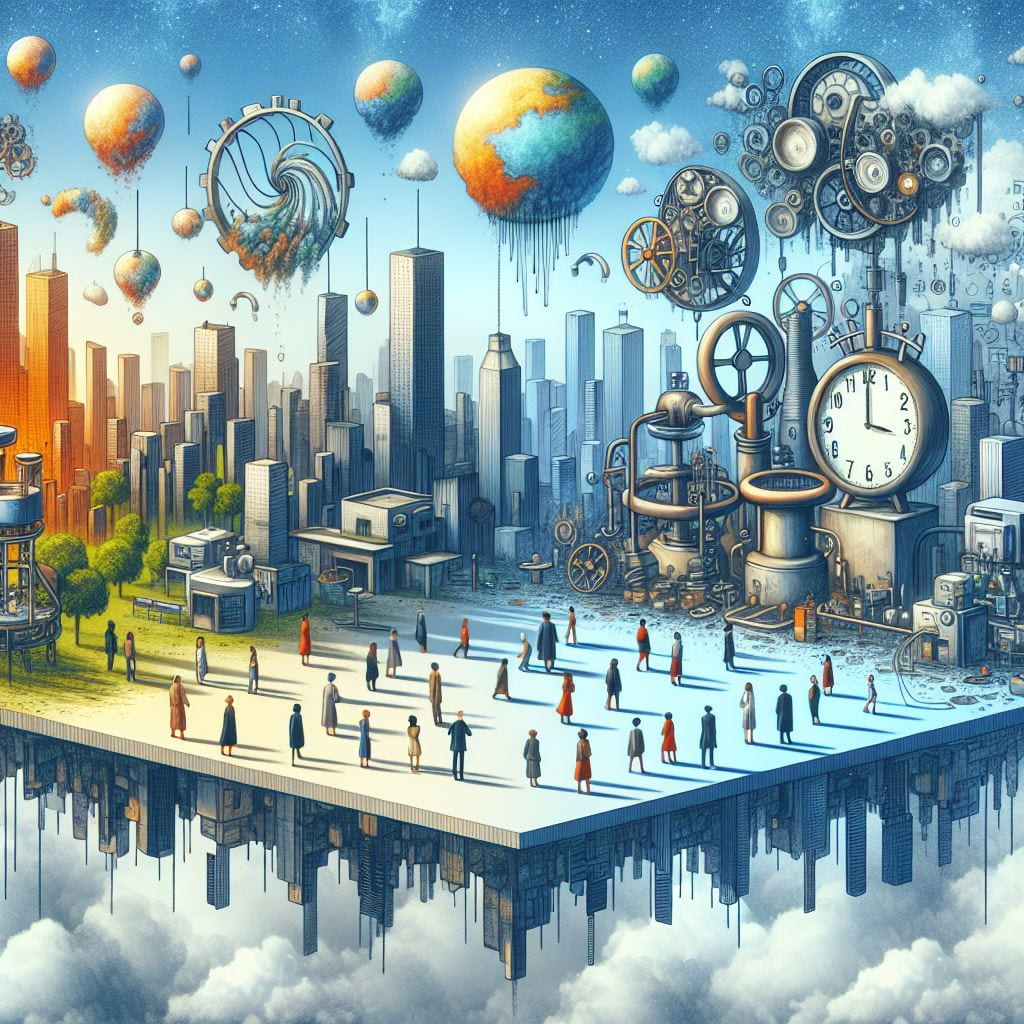
Imagining Hopeful & Just Futures
In Spring 2024, students in WWU’s ENVS 499D: Readings in Environmental Justice are reading about climate hope and climate futures. This post reflects some of the group’s learning and discussion.

By Elle Gasperini & Cassidy Schneider
Grist is an online journalism outlet that focuses on “exploring solutions at the intersection of climate and justice.” They offer a weekly newsletter called “The Beacon” that specifically offers positive climate news and have been running the “Imagine 2200: Climate Fiction for Future Ancestors” short story contest for the past few years. Many of these stories have been complied in the book Afterglow: Climate Fiction for Future Ancestors. In a world where we can easily conjure the aftereffects of increased natural disasters, see folks without homes on a regular basis, and are bombarded with negative news about the state of the world and what politicians are doing about it, these stories are a balm. So much of fiction is often dystopian, focused on all the problems and how they will spiral into terrible versions of the future. It seems like we forget it is possible that there can be solutions, joy and opportunity for things to be different. I do appreciate that the Climate Fiction prompt doesn’t just ask for utopia futures, but ones where we are still grappling with issues like racism, inequality, and relating to the natural world. The future won’t necessarily be easy or perfect, but we can find our way through these challenges with imagination and creativity. It will take seriously pondering questions like: how do we want to relate to technology in the future? How can we ensure that technology can be accessed by all and used justly? How can people create collectives and hope on their own? How do we want to connect with the environment in the future in a way that values nature but also humans as a part of nature? What is the role of disruption in bringing about change? These are the questions that Afterglow is helping us discuss in our Environmental Justice Seminar this quarter.
We can’t speak for everyone, but for us, the stories in Afterglow are opening our minds to an abundance of possibilities. For me (Elle), I am inspired by visions of technology that we use, but in moderation and with consideration for its impacts on others. I often find myself writing technology off as bad, and need to be reminded that it can also be beneficial and that a zero-carbon world will be possible because of technologies like wind and solar energy. I am also inspired by the consistent reminder that solutions always seem to center around community. As long as we keep creating spaces for people to be in community, I believe solutions will emerge. For me (Cassidy), I am motivated by the nationwide community that books such as Afterglow offer to young writers and readers. These stories are from the minds of those who grow in a world where we must seriously consider what the year 2200 may look like with our current climate action plans and I find an eagerness among future generations to steer decisions towards healing past and current climate damages. Spaces such as those offered by Grist and the seminar classes found on WWU’s campus can be spaces of healing for those wishing to foster a sense of community and offer a platform of dialogue and discussion.